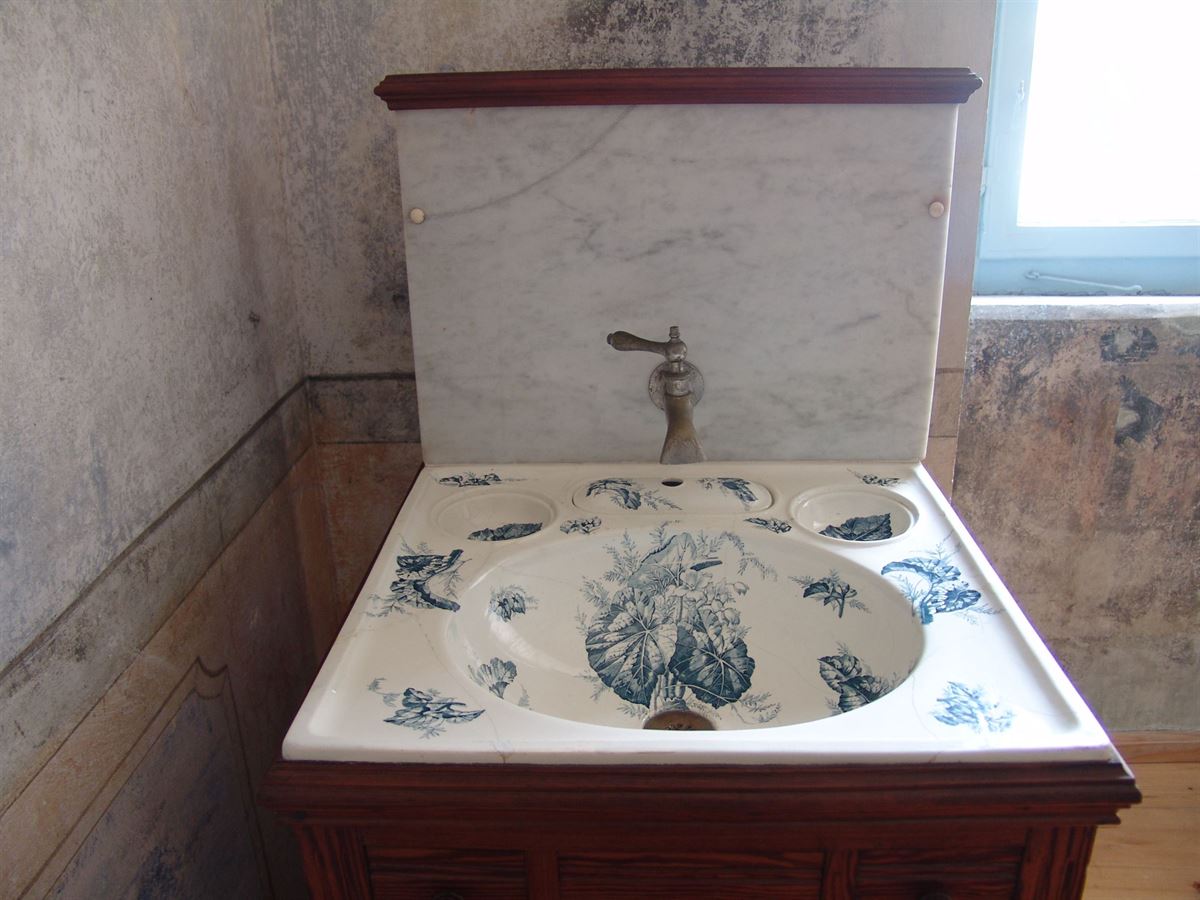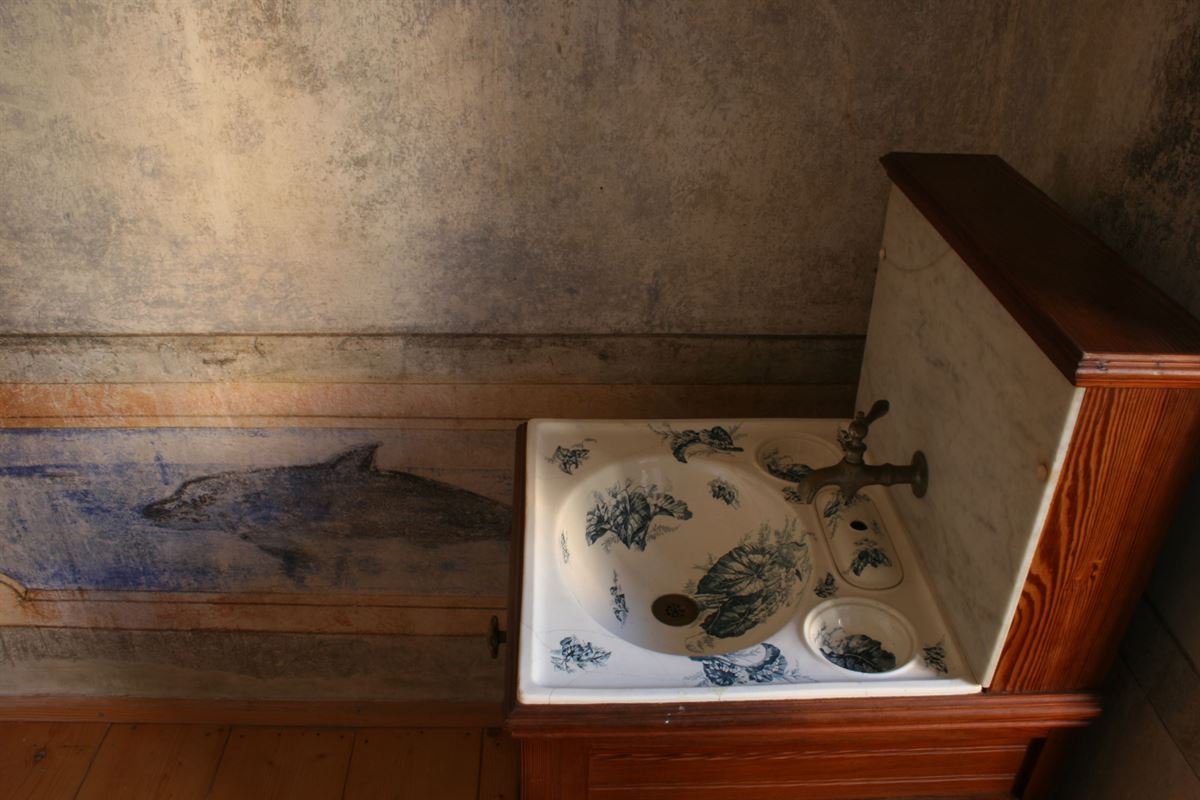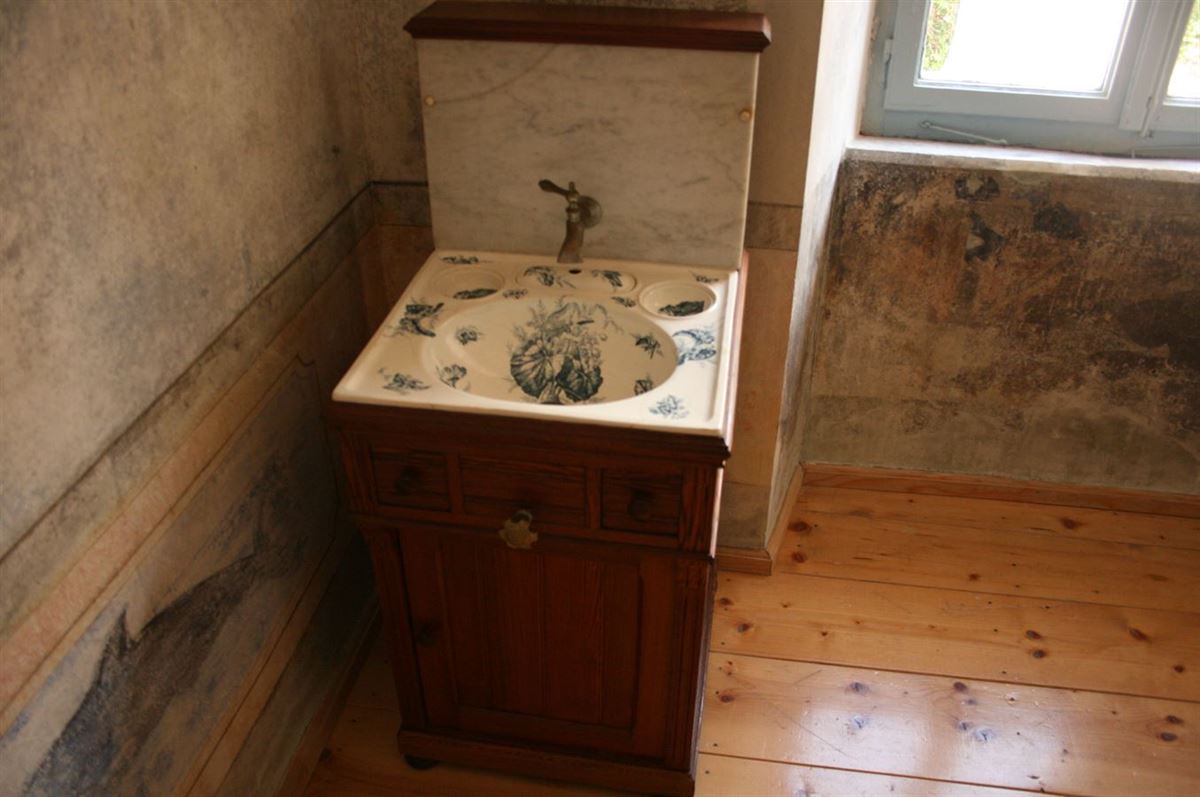tablica
| Inventory number: KB-149 |
| Material: wood, porcelain, lead |
| Dimensions: 116 x 51 x 58 cm |
| Dating: late 19th century |
| Origin: France |
| Made by: Keller et Guérin (K&G) (porcelain part) |
Središnji sadržaj
The washbasin consists of a wooden casing (cedar) with doors and space for accommodating waste water bins, and a ceramic sink painted with the decal technique (transferware) featuring blue begonia leaves. Alongside the basin cavity, there are three smaller grooves for hygiene accessories. This faience sink was produced at the Keller & Guérin factory in Luneville, in southern France. The upper part features a water tank of wooden construction with a marble front. Inside, there is a lead container where water for washing was poured.
Maintaining personal hygiene in the 19th century, a time when homes did not yet have developed plumbing or sewage systems, was significantly different from today. Water had to be manually brought in, heated, and then the used liquids had to be somehow disposed of from the apartment or house. A dressing table was part of the room’s inventory. On its top or independently, there would be a porcelain basin with a pitcher for washing, also serving as a place for keeping other toiletry items. Over time, in the latter half of the 19th century, dressing tables began to feature built-in porcelain basins and a water tank that could be filled with warm water. A special mechanism allowed water to drain from the sink into a container placed in a wooden cabinet. When running water was introduced, these dressing tables were moved to bathrooms and, with minor modifications, were connected to the water supply and sewage system.




